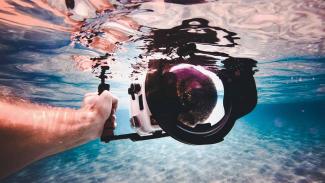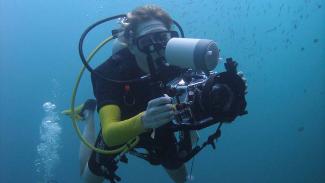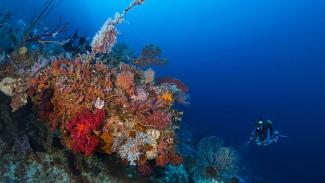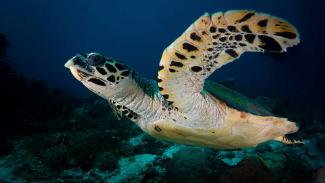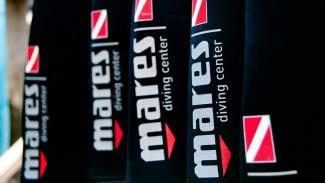
Enshadi
All the equipment involved in diving can seem a little intimidating to a newcomer. You are likely to be wondering what on earth a Regulator is, what BCD stands for, what a split fin might be & how many millimetres your wetsuit needs to be.
There's no need to feel intimidated though. Our beginner's guide to dive equipment will take you through the basics and help you feel a little more at home with some of the terminology.
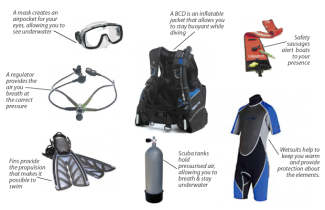
BCD's, tanks & regulators
BCD
BCD stands for Buoyancy Control Device. It is essentially an inflatable jacket. Add air to your BCD and you will be more buoyant in the water. take air out and you will be less buoyant. You will hear some BCD's referred to as integrated BCDs. This simply means that they have pockets where you can put your dive weights, instead of attaching them around your waist like a belt.
Regulator
A regulator is the most technical piece of your dive equipment. It attaches to your scuba tank, releasing air from the tank when you breath in and converting it to a pressure that is suitable for you to breath. The central part of a regulator is known as the first stage and attaches to your scuba tank. There are also four hoses: one that provides air for you, known as your second stage; a spare second stage for emergencies, often known as an Octopus; a hose that attaches to your BCD allowing you to add air to the jacket and a guage that tells you how much air is left in your scuba tank.
Scuba Tank
A scuba tank holds pressurised air that you will use during your dive. Normally, this air is pressurised to 200 bar (the air we breath at sea-level is 1 bar). Some places will measure the air pressure in PSI (pounds per square inch) rather than bar. This pressurised air is converted into air we can breath by the regulator. Scuba tanks are normally made of either steel or aluminium. They come in various sizes, but the most commonly used tank is 12 litres.
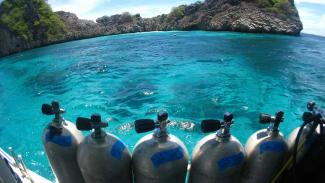
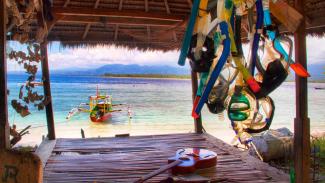
Mikaku
You might also enjoy...
Underwater housing care
Jakob Owens
Buying all the kit to allow you to take photos underwater is not cheap, so you need to make your equipment lasts the test of time.
One of the major and most vital expenses is your underwater housing. Housings are often fragile and can require a lot of care and attention though. So what should you be doing to look after your housing and to make sure it has a happy and healthy life?
Buyer's guide to underwater cameras
Tara North
If you are reading this article, then you probably have the bug. No doubt you’ve seen some incredible underwater photos in dive magazines or had a go and are eager for more.
There’s no doubt that having your own camera & housing is essential for your new hobby. There is such a wide range of options available today though, so how do you begin to choose?
Getting technical
Christian Gloor
Have you ever found yourself diving on a reef wall and wondering what lurks in the depths below? Or longed to spend more than a few fleeting moments exploring a mysterious & historic shipwreck?
Then maybe technical diving is the sport for you. Increasing numbers of divers, eager to explore beyond the bounds of recreational limits, are taking an interest in technical diving.
Bali
Possibly Indonesia's most well known tourist destination, the diving in Bali is also excellent.
Many divers head to Tulamben on Bali's eastern coast, home of the USS Liberty wreck.
To the south of Bali lie the islands of Nusa Penida, Lembongan and Ceningan, where Manta Rays and Mola Mola can be seen in season.
Choosing the right dive spot
Phil North


